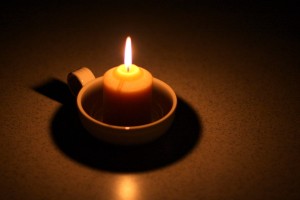Ease*****
Overview
This is great for helping learners recognise the difference between natural and artificial light sources. It also tackles the tricky subject of what is and what is not a light source.
Description
Make a list of things that ‘give out light’. List everything children suggest, even if they are technically wrong e.g. the moon – this will be important when they review and evaluate their learning at the end of the lesson.
Give them a range of light sources to investigate – e.g. different shape torches, a camping lantern, a candle, a reading light etc. You can provide pictures of those that can’t be brought into the classroom e.g. the sun, streetlights, car headlights etc. At this junction, you’ll probably want to point out some safety issues like not shining torches into their eyes, and only the teacher gets to light a candle!
Allow learners the opportunity to draw some of them, either on the whiteboard or using a drawing program. Alternatively, use a digital camera to take pictures. This is particularly effective if you photograph the light source against a black background.
For each item, ask the children e.g. What are they for? Who might use them? How are they different? How are they the same? How bright or dull are they? Do they give off heat?
Provide some 3D shapes like a ball, a cylinder, a cube and let them use the torches to look at the different shadows produced by shining a torch on them. Do different objects produce different shadows? Do the shadows move when they move the torch? You could ask children to put the object in the middle of a large piece of paper and to draw the shadows as they move the torch around the object.
Either in groups or as a class, consolidate learning by playing the following game http://www.bbc.co.uk/schools/scienceclips/ages/5_6/light_dark.shtml
Refer back to their initial list of light sources and have them discuss if they still agree with their initial ideas.
What do I need?
- Internet access.
- Variety of torches, lanterns, candles etc.
- Drawing software – Tux, Too Simple Kidpix or similar
Added value
Developing Interactive Whiteboard skills are essential if learners are to use increasingly difficult whiteboard applications. This activity offers several opportunities for learners to do this whilst also developing their knowledge and understanding of a key science topic.
Hints and tips:
The recommended game is in English, if they have a different first language it is easy to play the game with the teacher reading the questions and choices aloud in the learners’ mother tongue.
Safety:
See activity for practical suggestions regarding the non-IT elements.
There are no safety issues relating to this software.
Other ideas
- Create some day or night pictures using drawing software on the computer.
- Ask the children to collect pictures of light sources and to bring them into school. Use the pictures to create a class Glog or Pinterest (See the unit Glog It! in this handbook.)
- Take some landscape photographs. Using simple image manipulation software (e.g. iPhoto on a Mac or Picasa or Gimp on both Mac and Windows) experiment with the effects and editing options to see what happens when you increase or decrease the exposure, increase the contrast, reduce the colour intensity etc. Can you make the same image look like a night-time scene and a daytime scene? Can you make the image ‘change season’?
This post is also available in: German, Italian, Portuguese (Portugal), Romanian, Welsh





 English
English Nederlands
Nederlands Deutsch
Deutsch Italiano
Italiano Español
Español Português
Português Română
Română Cymraeg
Cymraeg
I wonder if this idea could be developed so that learners created a sundial outside? OK, so it would be a crude sundial, but I’m sure they’d find it engaging.